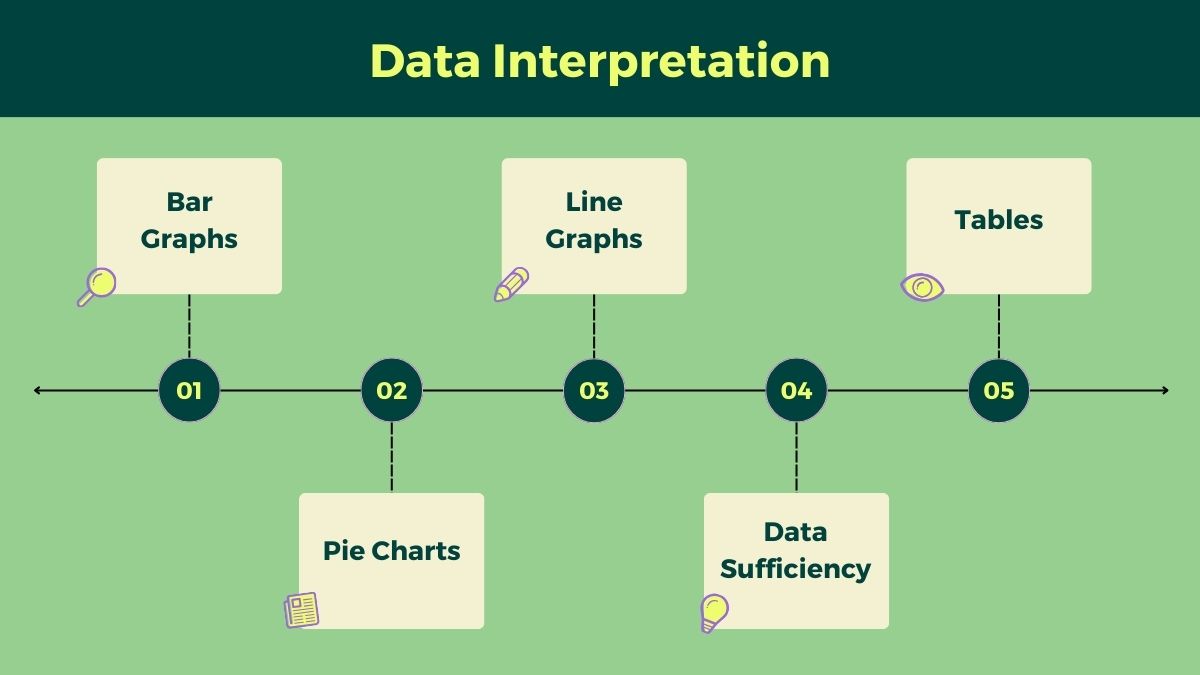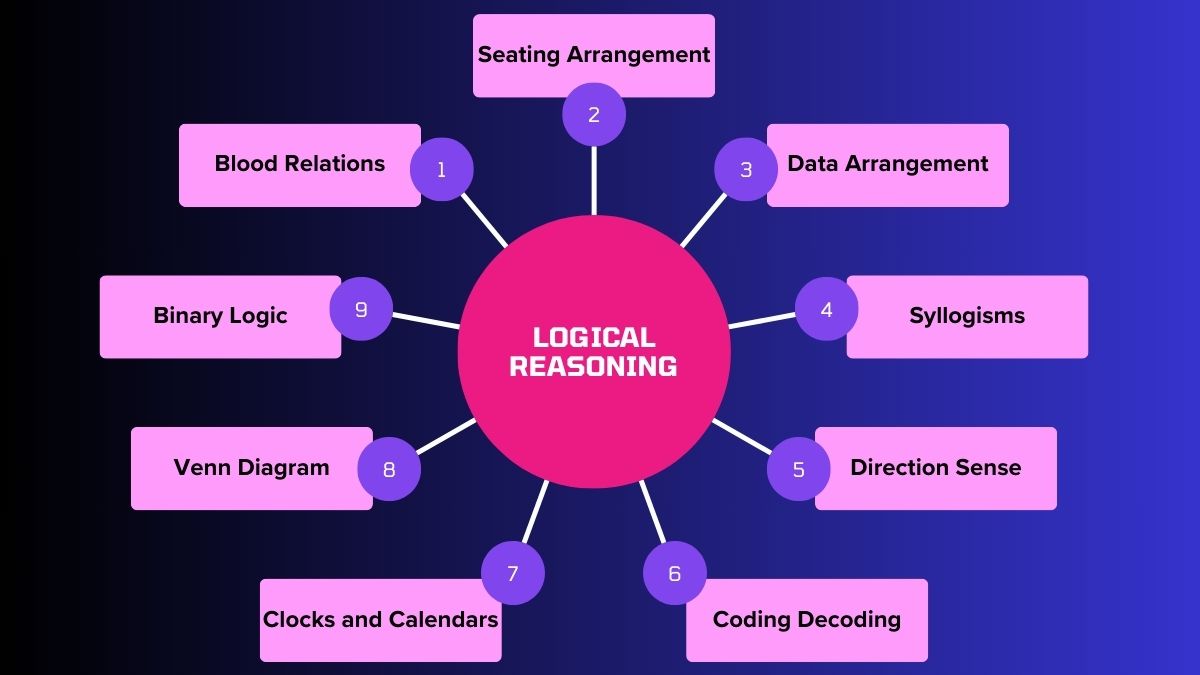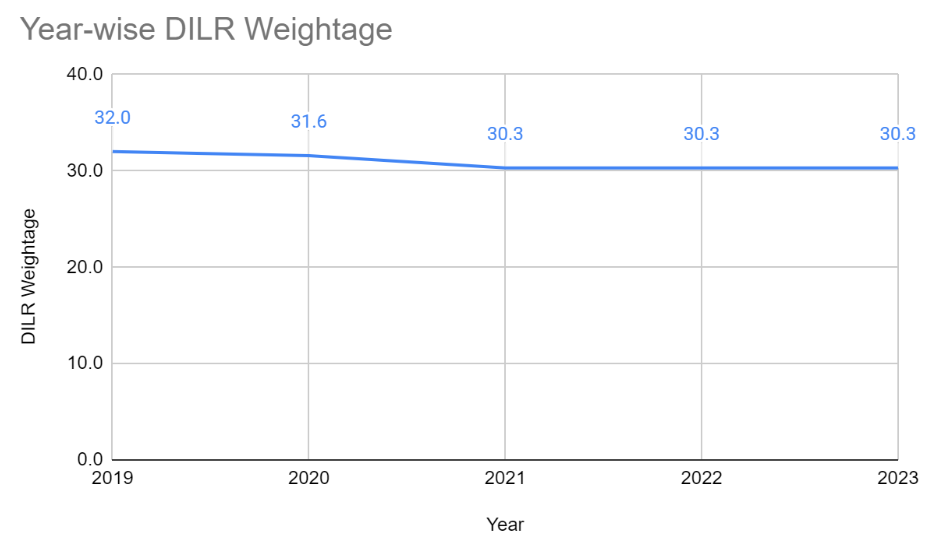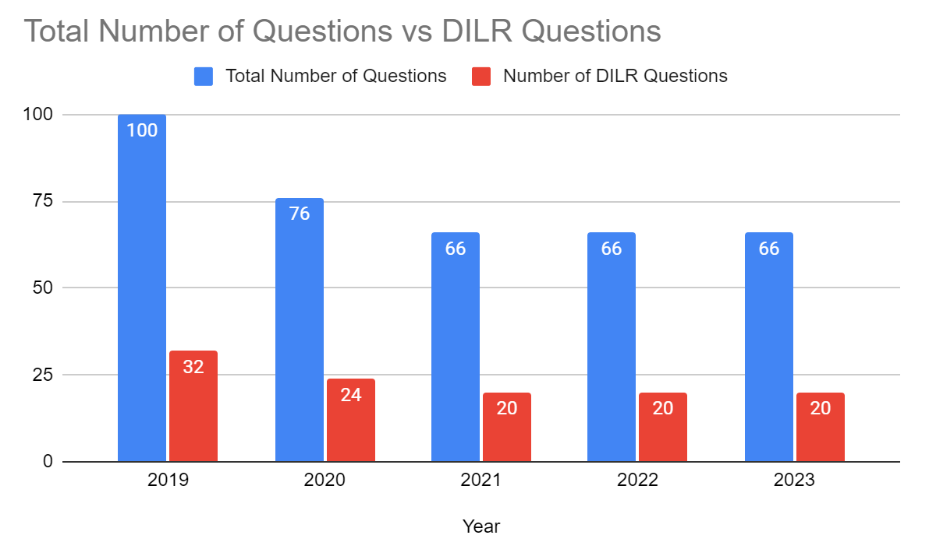CAT Data Interpretation and Logical Reasoning: To excel in the CAT exam, mastering the Data Interpretation and Logical Reasoning (DILR) section is paramount. This part is known for its high level of difficulty and diverse question types, unlike the clearly outlined syllabus of the quantitative section. As a result, candidates often find preparing for DILR section challenging and confusing. However, with a well-planned strategy, candidates can excel in their preparation and ace this section.
In the DILR section of CAT, questions typically present data in the form of charts, graphs, or sets. Candidates are required to analyse this data and respond to subsequent questions based on their analysis.
Candidates aiming for a perfect score can practice the MBA Entrance Exam Mock Test by Jagran Josh to know where they stand vis a vis their peers.
CAT Data Interpretation and Logical Reasoning Syllabus 2024
Before delving into the strategy for the Data Interpretation & Logical Reasoning (DILR) section, let's take a quick overview of its syllabus and exam pattern. The CAT exam comprises three sections -VARC, DILR and QA. The DILR section contains 20 questions in the form of Multiple choice questions (MCQ) and Type in the Answer (TITA) questions. All the aspiring candidates of CAT 2024 exam must go through the CAT DILR Syllabus to have an idea about the section.
CAT Data Interpretation Syllabus
The DILR section consists of questions which check the candidate's analytical and logical skills. This section is often perceived as difficult by students because of the complex nature of the data sets asked in the questions. Unlike the QA section, the DILR section does not have a fixed syllabus. Ideally, a candidate can expect 8-10 questions from Data Interpretation. The important topics of the CAT Data Interpretation syllabus are provided below:
- Bar Graphs
- Line Graphs
- Tables
- Pie Charts
- Data Sufficiency

CAT Logical Reasoning Syllabus 2024
CAT logical reasoning syllabus includes topics like seating arrangement, blood relations, logical puzzles, etc. In the CAT 2024 exam, the candidate can find around 10-12 questions from logical reasoning. The most important topics of the CAT logical reasoning syllabus are given below
- Seating Arrangement
- Blood Relations
- Puzzles
- Data Arrangement
- Syllogisms
- Direction Sense
- Coding Decoding
- Binary Logic
- Logical Matching
- Logical Connectives
- Clocks and Calendars
- Venn Diagram

Also Check,
IIMs Admission and Selection Process
CAT Logical Reasoning & Data Interpretation 2024: Exam Pattern
CAT DILR section comprises two sub-sections- Data Interpretation and Logical Reasoning. In this section, the candidates have to solve 20 questions within 40 minutes. Check the following table to know about the CAT DILR section exam pattern. This will help you to strategise your preparation for the exam.
| CAT 2024 Data Interpretation and Logical Reasoning Exam Pattern | |
| Section | Data Interpretation and Logical Reasoning (DILR) |
| Total Number of Questions | 20 |
| Maximum Marks | 60 |
| Time Allotted | 40 minutes |
| Type of Questions |
|
| Marking scheme |
|
Number of DILR questions in CAT over the years
The following graphs depict the number of DILR questions relative to the total number of questions, along with changes in the weightage of this section over the years.

How to Prepare the CAT Data Interpretation & Logical Reasoning Syllabus 2024?
CAT Exam is the most prestigious management entrance exam in the country, it requires dedication, discipline, and effective preparation planning. Here, we discuss some tips that you must keep in mind while preparing for CAT Data Interpretation and Logical Reasoning.
- Develop the ability to quickly analyse the data presented in different formats such as tables, graphs, and charts.
- Practice as many sample questions as possible.
- Develop logical thinking and problem-solving abilities by solving puzzles, brain teasers, and logical reasoning questions regularly.
- This section requires a lot of calculation and analysis, solve DILR questions within a certain time frame to improve your speed and accuracy.
- Always solve mixed question sets of Data Interpretation and Logical Reasoning. Do not go for individual LR or DI sets. It will help on exam day when you find mixed questions of LR and DI.
- Solve previous year’s CAT question papers to understand the exam pattern and get familiar with the types of questions asked. This will also improve your time management skills.
- Regularly take mock tests to acclimate yourself to the actual exam environment. Use the results from these tests to analyse your performance and identify areas where you need to focus and improve.
How to approach the Data Interpretation & Logical Reasoning section of CAT?
The CAT Data Interpretation and Logical Reasoning questions are designed to check an aspirant's logical thinking and analytical skills. The ability to analyse the given information or data is checked here. So the candidates need to follow a strategic approach to solve the DILR questions.
- Read and understand the question carefully to find your answers quickly and accurately.
- If you stack on any question do not spend too much time on it.
- Read long questions till the end and do not make assumptions after reading the half question.
- Spend a specific amount of time on each question.
- Pay close attention to specific words like ‘all’, ‘only’, ‘some’, ‘none’, ‘if only’, etc. These words might simplify your question.
Also, Check
CAT IIM Toppers Success Strategies
CAT DILR Important Questions
Set 1. A visa processing office (VPO) accepts visa applications in four categories – US, UK, Schengen, and Others. The applications are scheduled for processing in twenty 15-minute slots starting at 9:00 am and ending at 2:00 pm. Ten applications are scheduled in each slot.
There are ten counters in the office, four dedicated to US applications, and two each for UK applications, Schengen applications and Others applications. Applicants are called in for processing sequentially on a first-come-first-served basis whenever a counter gets freed for their category. The processing time for an application is the same within each category. But it may vary across the categories. Each US and UK application requires 10 minutes of processing time. Depending on the number of applications in a category and time required to process an application for that category, it is possible that an applicant for a slot may be processed later.
On a particular day, Ira, Vijay and Nandini were scheduled for Schengen visa processing in that order. They had a 9:15 am slot but entered the VPO at 9:20 am. When they entered the office, exactly six out of the ten counters were either processing applications, or had finished processing one and ready to start processing the next.
Mahira and Osman were scheduled in the 9:30 am slot on that day for visa processing in the Others category.
The following additional information is known about that day.
- All slots were full.
- The number of US applications was the same in all the slots. The same was true for the other three categories.
- 50% of the applications were US applications.
- All applicants except Ira, Vijay and Nandini arrived on time.
- Vijay was called to a counter at 9:25 am.
Ques 1. How many UK applications were scheduled on that day?
Ques 2. What is the maximum possible value of the total time (in minutes, nearest to its integer value) required to process all applications in the Others category on that day?
Ques 3. Which of the following is the closest to the time when Nandini's application process got over?
Ques 4. Which of the following statements is false?
- The application process of Mahira was completed before Nandini's.
- The application process of Osman was completed before Vijay's.
- The application process of Osman was completed before 9:45 am.
- The application process of Mahira started after Nandini's.
Ques 5. When did the application processing for all US applicants get over on that day?
- 2:25 pm
- 3:40 pm
- 2:00 pm
- 2:05 pm
Set 2. Five restaurants, coded R1, R2, R3, R4 and R5 gave integer ratings to five gig workers – Ullas, Vasu, Waman, Xavier and Yusuf, on a scale of 1 to 5.
The means of the ratings given by R1, R2, R3, R4 and R5 were 3.4, 2.2, 3.8, 2.8 and 3.4 respectively.
The summary statistics of these ratings for the five workers is given below.
| Ullas | Vasu | Waman | Xavier | Yusuf | |
| Mean rating | 2.2 | 3.8 | 3.4 | 3.6 | 2.6 |
| Median rating | 2 | 4 | 4 | 4 | 3 |
| Modal rating | 2 | 4 | 5 | 5 | 1 and 4 |
| Range of rating* | 3 | 3 | 4 | 4 | 3 |
* Range of ratings is defined as the difference between the maximum and minimum ratings awarded to a worker.
The following is partial information about ratings of 1 and 5 awarded by the restaurants to the workers.
(a) R1 awarded a rating of 5 to Waman, as did R2 to Xavier, R3 to Waman and Xavier, and R5 to Vasu.
(b) R1 awarded a rating of 1 to Ullas, as did R2 to Waman and Yusuf, and R3 to Yusuf.
Ques 1. How many individual ratings cannot be determined from the above information?
Ques 2. To how many workers did R2 give a rating of 4?
Ques 3. What rating did R1 give to Xavier?
Ques 4. What is the median of the ratings given by R3 to the five workers?
Ques 5. Which among the following restaurants gave its median rating to exactly one of the workers?
- R5
- R2
- R3
- R4

Comments
All Comments (0)
Join the conversation